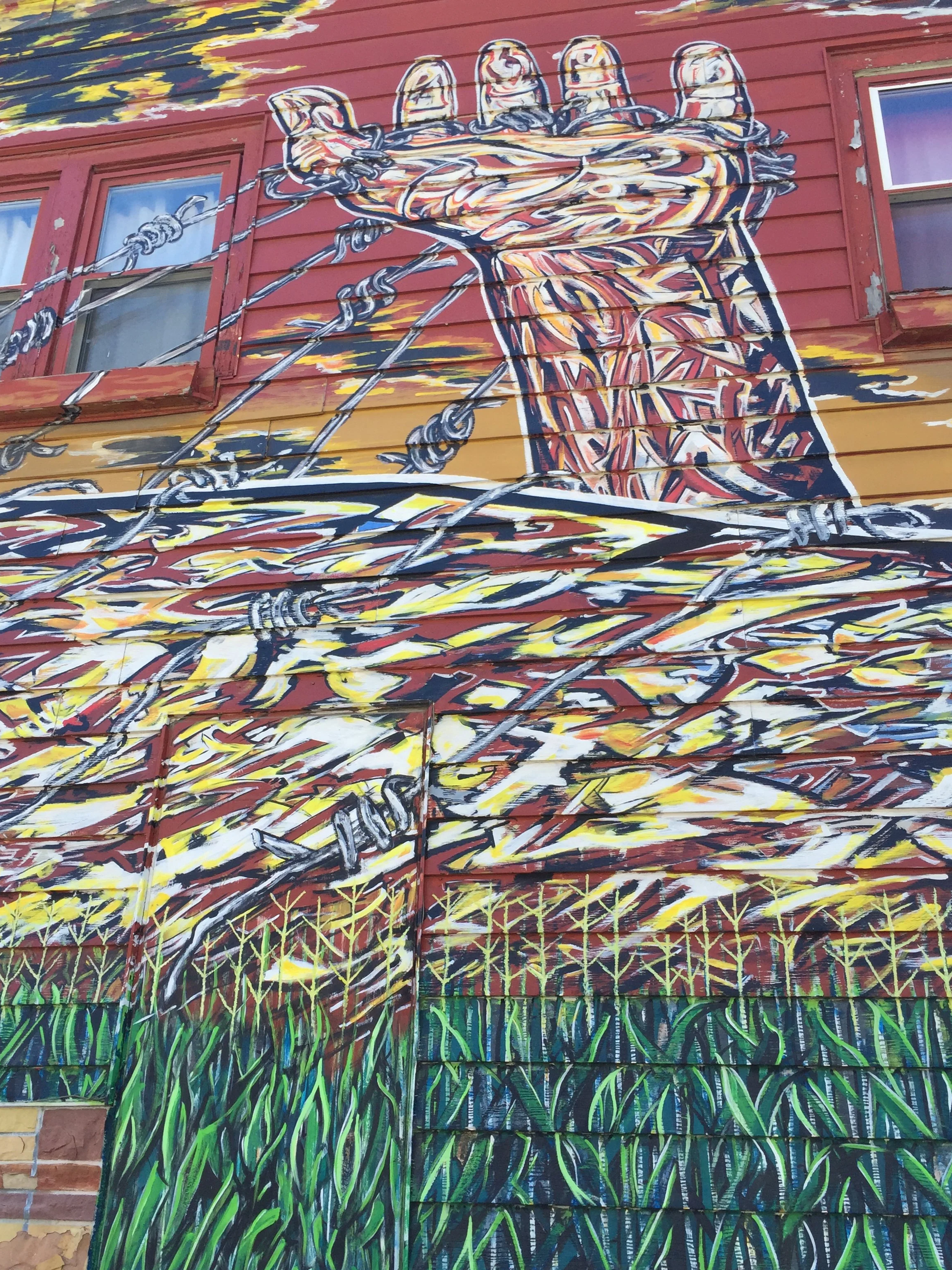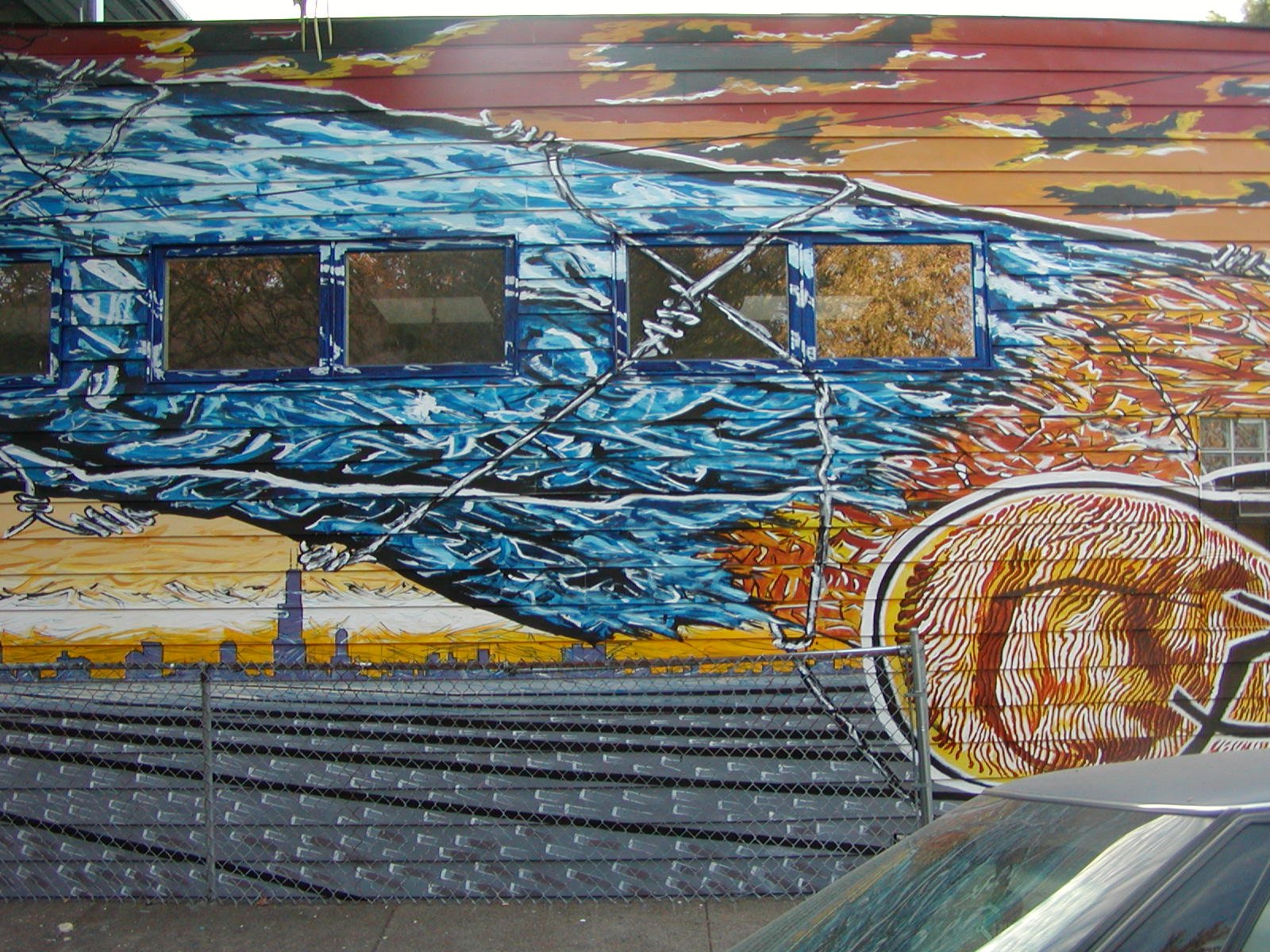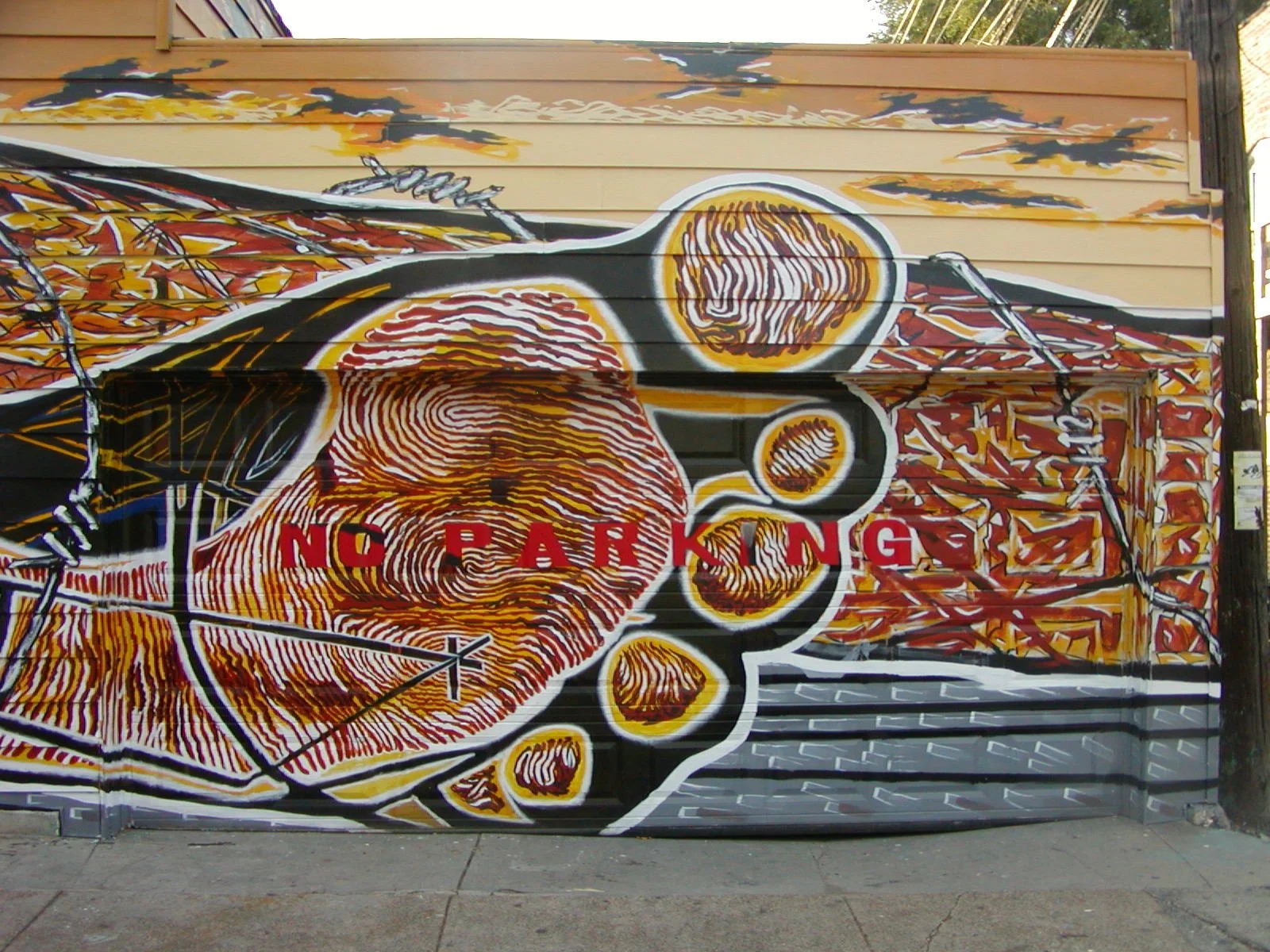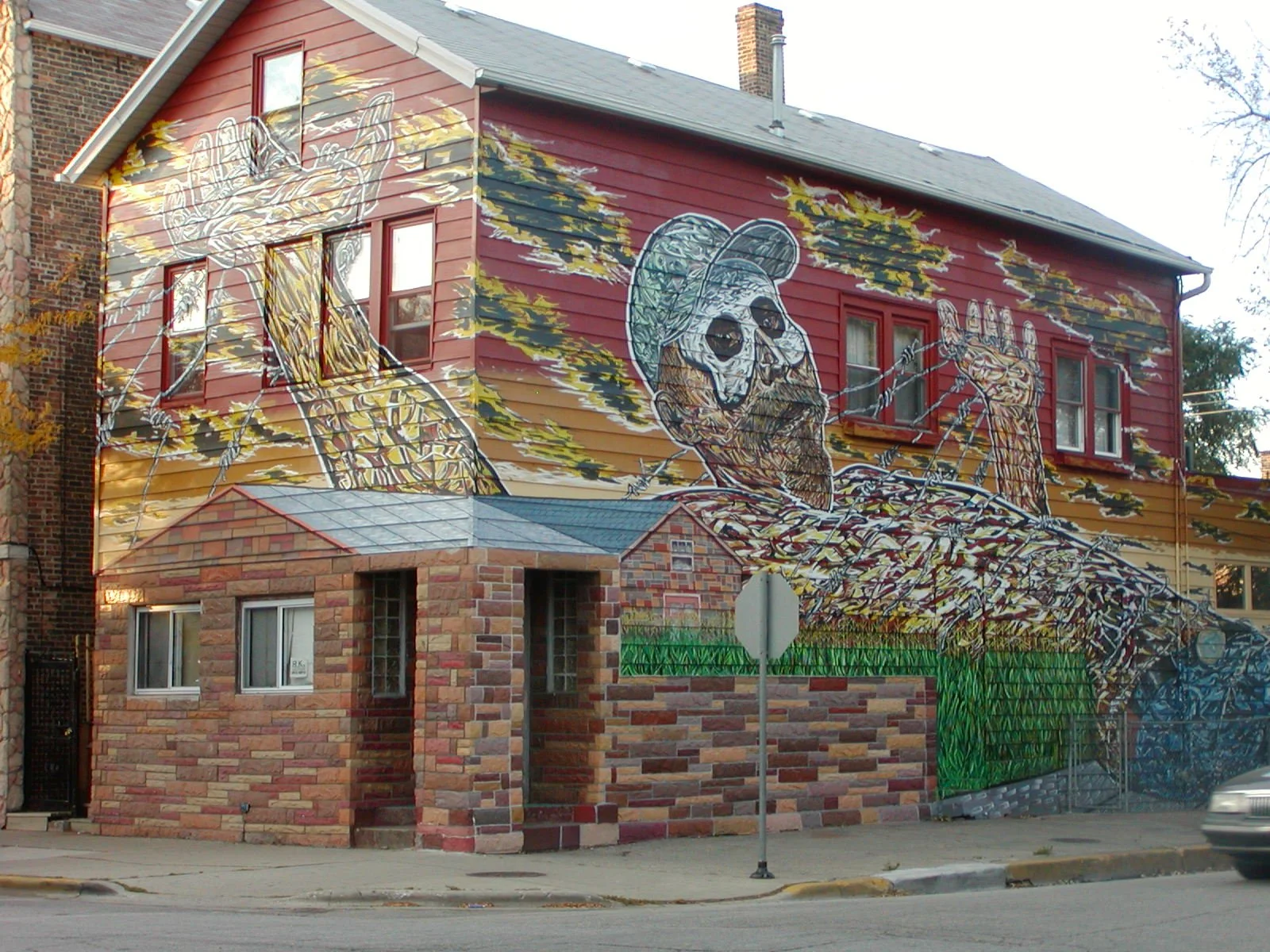“Gulliver in Wonderland“
“Gulliver en el país de las maravillas”
2005. ca. 3,500 total square feet, acrylic on aluminum siding painted on exterior walls of artist’s home and studio, Cullerton and Wolcott Streets, Chicago.
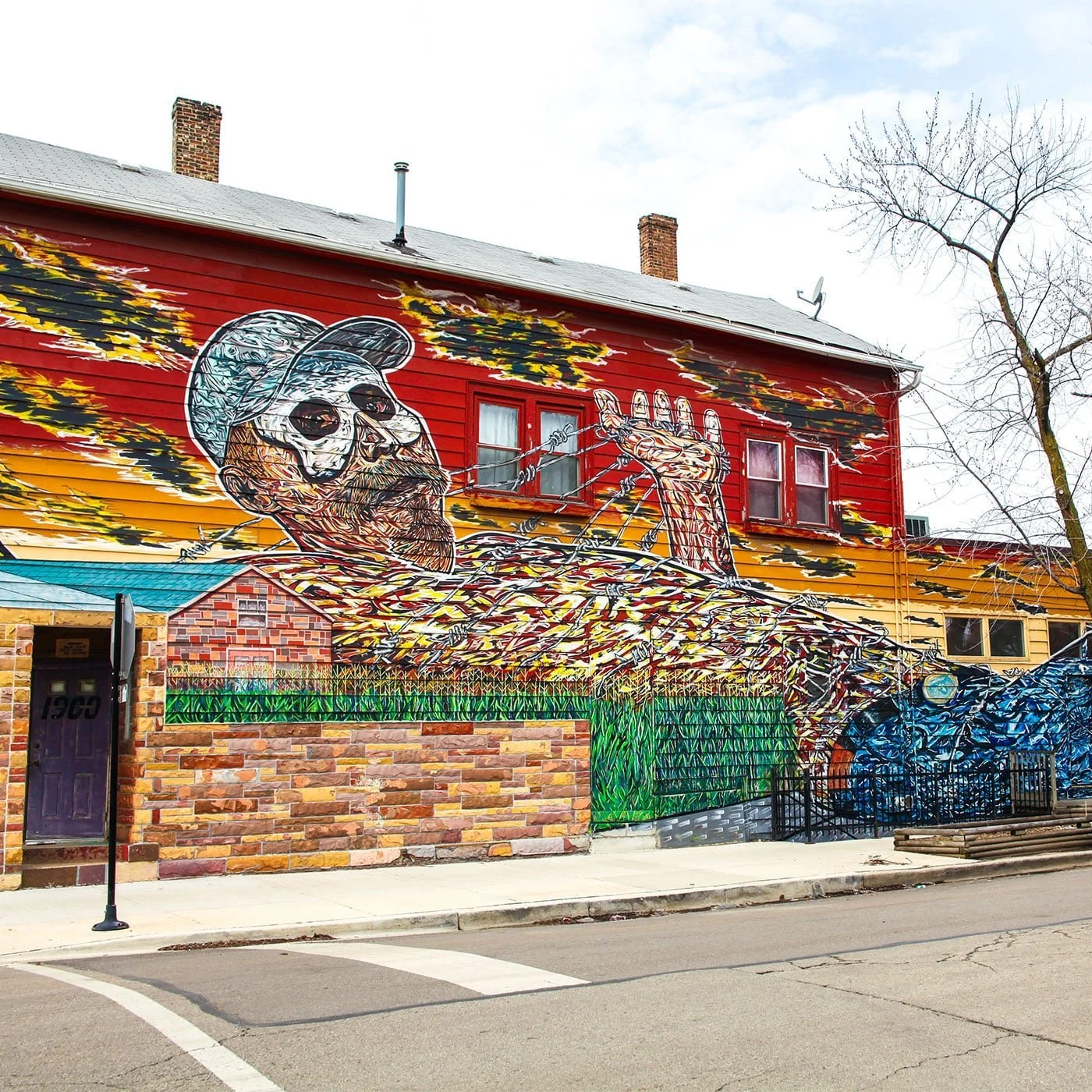
Photo credit: Kaitlynn Scannell
The mammoth work of art is meant as a commentary on the situation that many immigrants find themselves in when they come to the United States ("Wonderland") and encounter a foreign language, a foreign culture, and hostility toward their presence.
Duarte used the figure of Gulliver from Gulliver's Travels as a starting point for the mural. In the dramatic mural, a modern-day immigrant is caught and struggles to break free from barbed wire — a symbol for borders.
"For me, this is a reference not only to physical borders but also to cultural borders and personal borders that may be unique to each immigrant,” says Duarte, who moved to Chicago from his native Mexico in 1985.
Duarte says the mural poses a question:
Do you want to remain tied up or do you want to break free?
The mural should provoke thought about treatment of immigrants, and also about how immigrants view themselves, says Duarte.
"For some people who come to this country, they have overcome so many obstacles. They are so far from the place they were born, in terms of distance, culture, language -they feel like they've conquered the world, like they are giants.
But at the same time they find themselves bound— bound by poverty, by the inability to speak English or get around, or bound by new forms of slavery, like the excessive consumerism here."
During his career, Duarte has focused extensively on the way the viewer's perspective of a mural changes as they move along the street. In this case, those who pass by the massive Gulliver mural become a part of the artwork— the Lilliputians who have tied up the giant.
The mural is best viewed from the southeast corner of Cullerton and Wolcott streets. Another important view is from the north, near the giant's two feet. A view of Chicago's grid-patterned residential blocks and downtown skyline appear as a hazy illusion in the mural, anchoring Gulliver to the Windy City. The black lines running out from this part of the mural interplay with the actual lines on the sidewalk and the cyclone fence.
Other symbols/images in the mural include a reference to the torture of Aztec emperor Cuauhtémoc at the hands of Spanish conquerors, who burned Cuauhtémoc's feet. The fingerprint-like lines present on the sole of the foot have marked Duarte's studio work and suggest issues of identity or perhaps criminality. The mask worn by the giant transforms him and obscures who he is.

